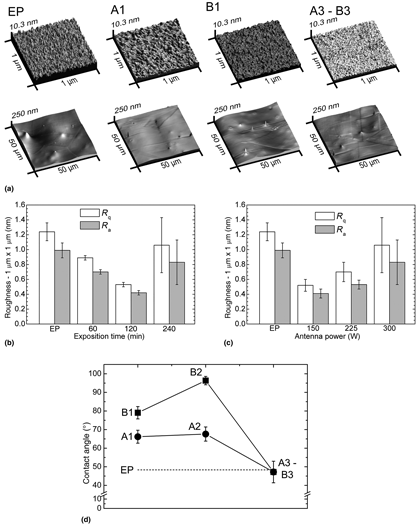Article contents
Surface modification of L605 by oxygen plasma immersion ion implantation for biomedical applications
Published online by Cambridge University Press: 24 September 2018
Abstract

Co–Cr alloys, more specifically L605, have superior mechanical properties and high-corrosion resistance, making them suitable materials for cardiovascular application. However, metallic materials for biomedical applications require finely tuned surface properties to improve the material behavior in a physiological environment. Oxygen plasma immersion ion implantation was performed on an L605 alloy, after an electropolishing pre-treatment. The oxidized layer was found to be rich in Co and O, it did not show any trace of Cr, and resulted in nanostructured. The corrosion properties were profoundly changed. Endothelial cells showed high viability after 7 days of contact with some modified surfaces.
Information
- Type
- Research Letters
- Information
- Copyright
- Copyright © Materials Research Society 2018
References
- 6
- Cited by

